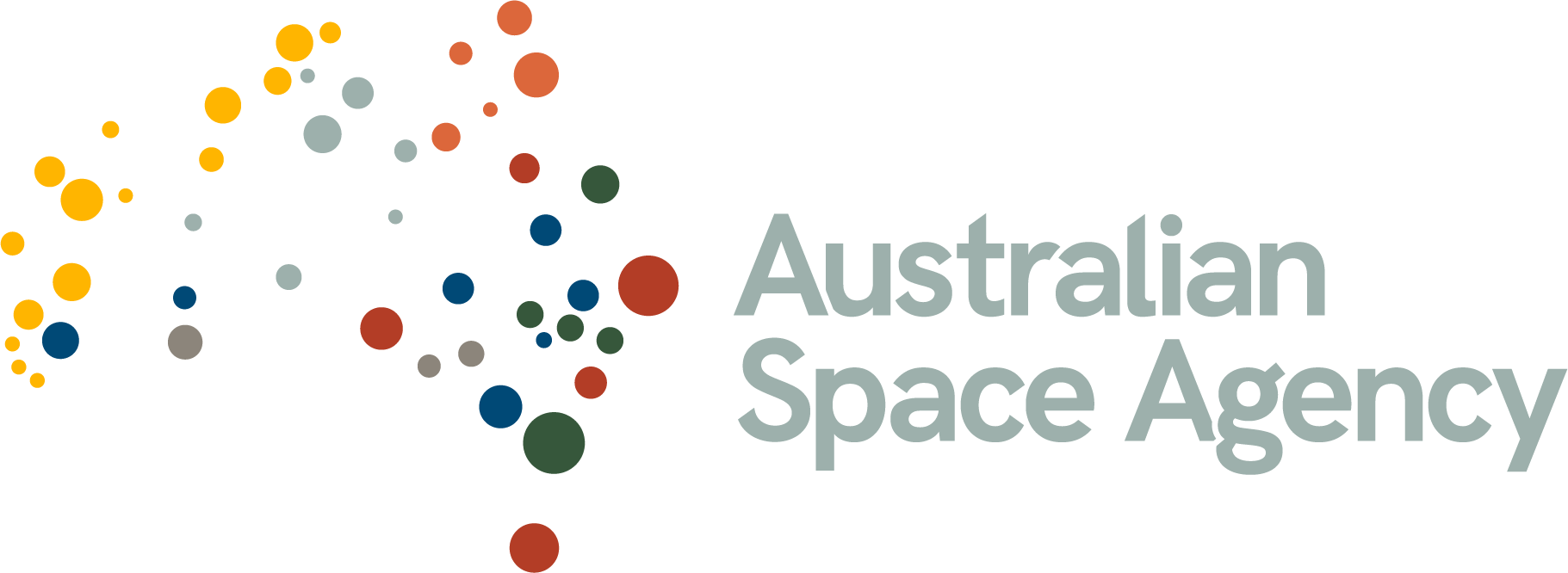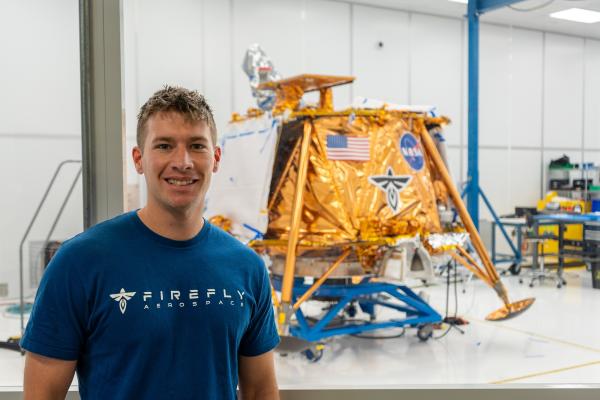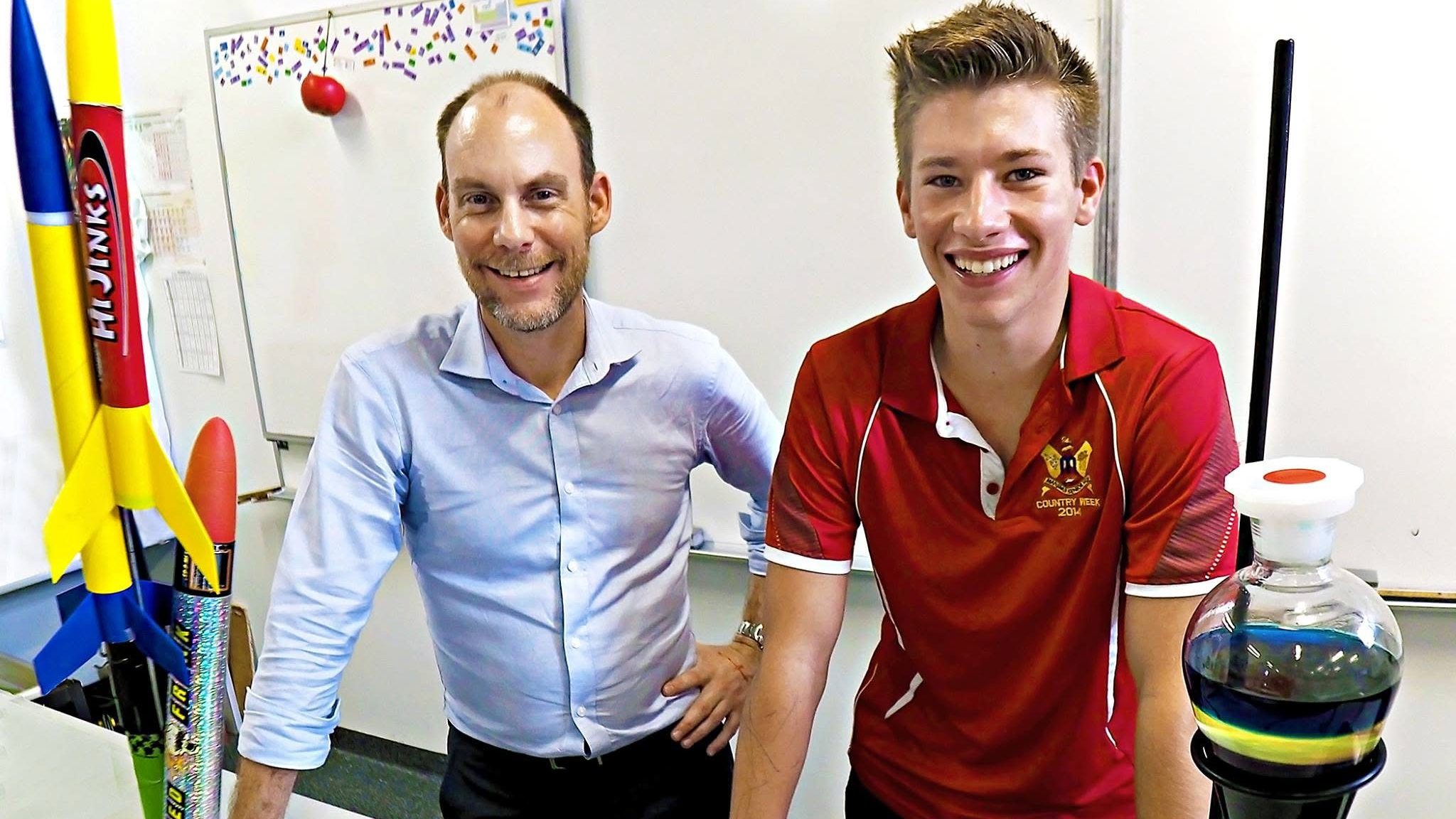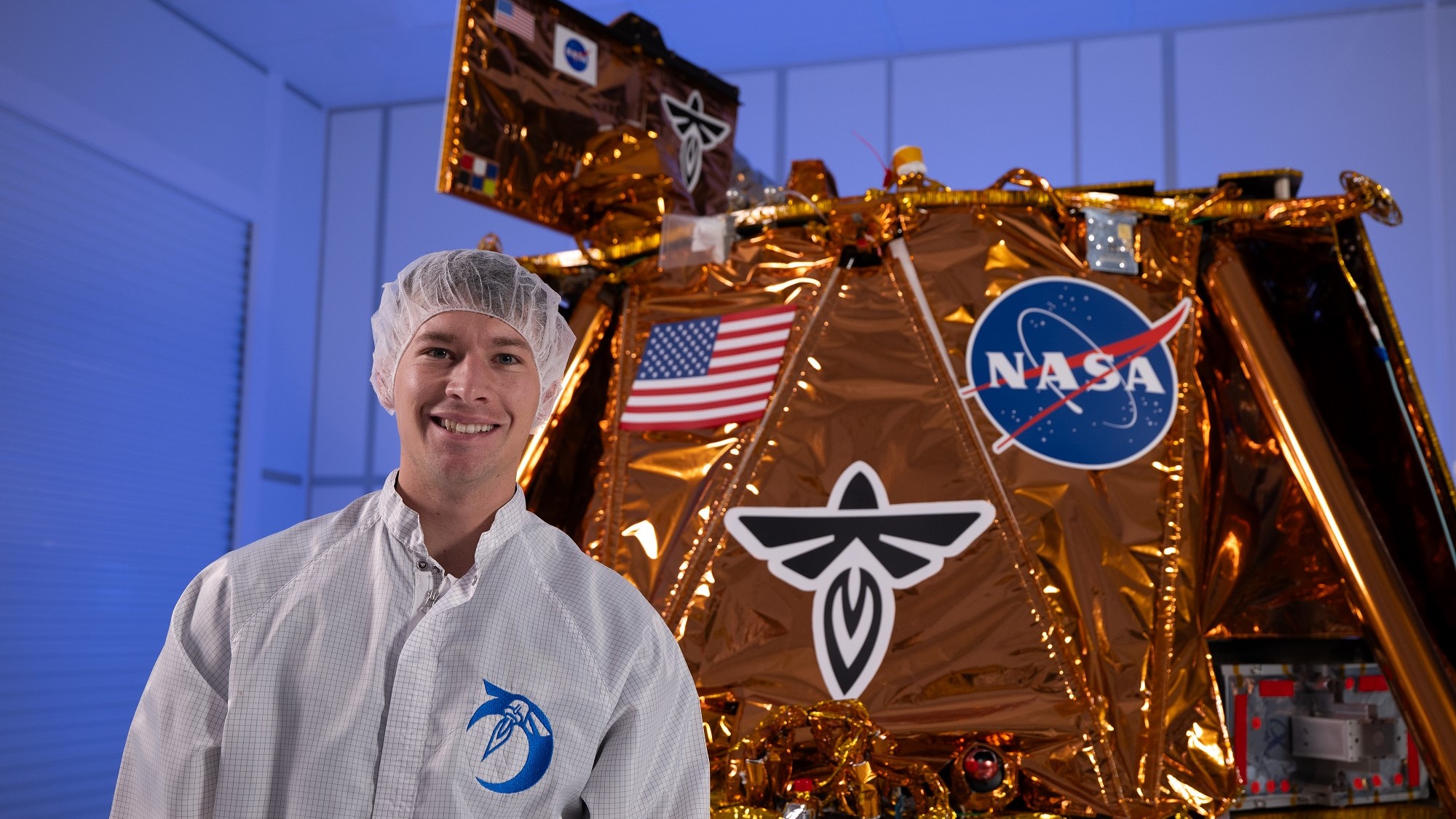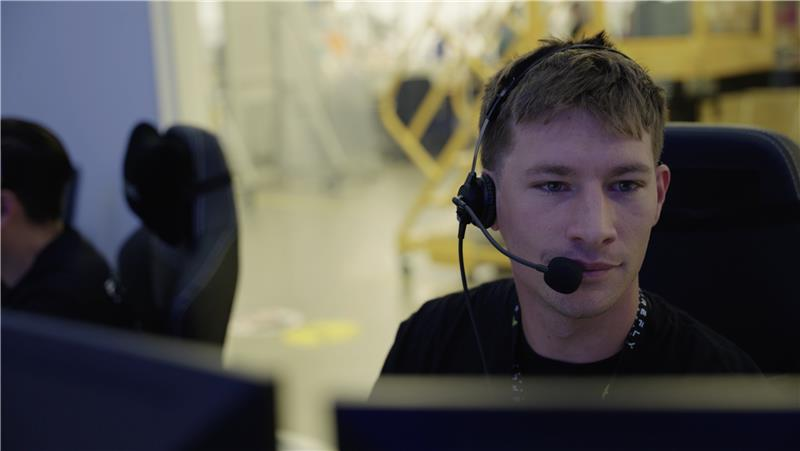Nine years ago, a high school graduate travelled across the Pacific in pursuit of his dreams in space exploration.
Jaxon Liebeck went from Manjimup Senior High School in regional Australia to studying aerospace engineering at the University of Texas, and ultimately into US-based Firefly Aerospace's mission control room.
When the company's Blue Ghost Mission 1 descended on the Moon in March, Jaxon was its Flight Director.
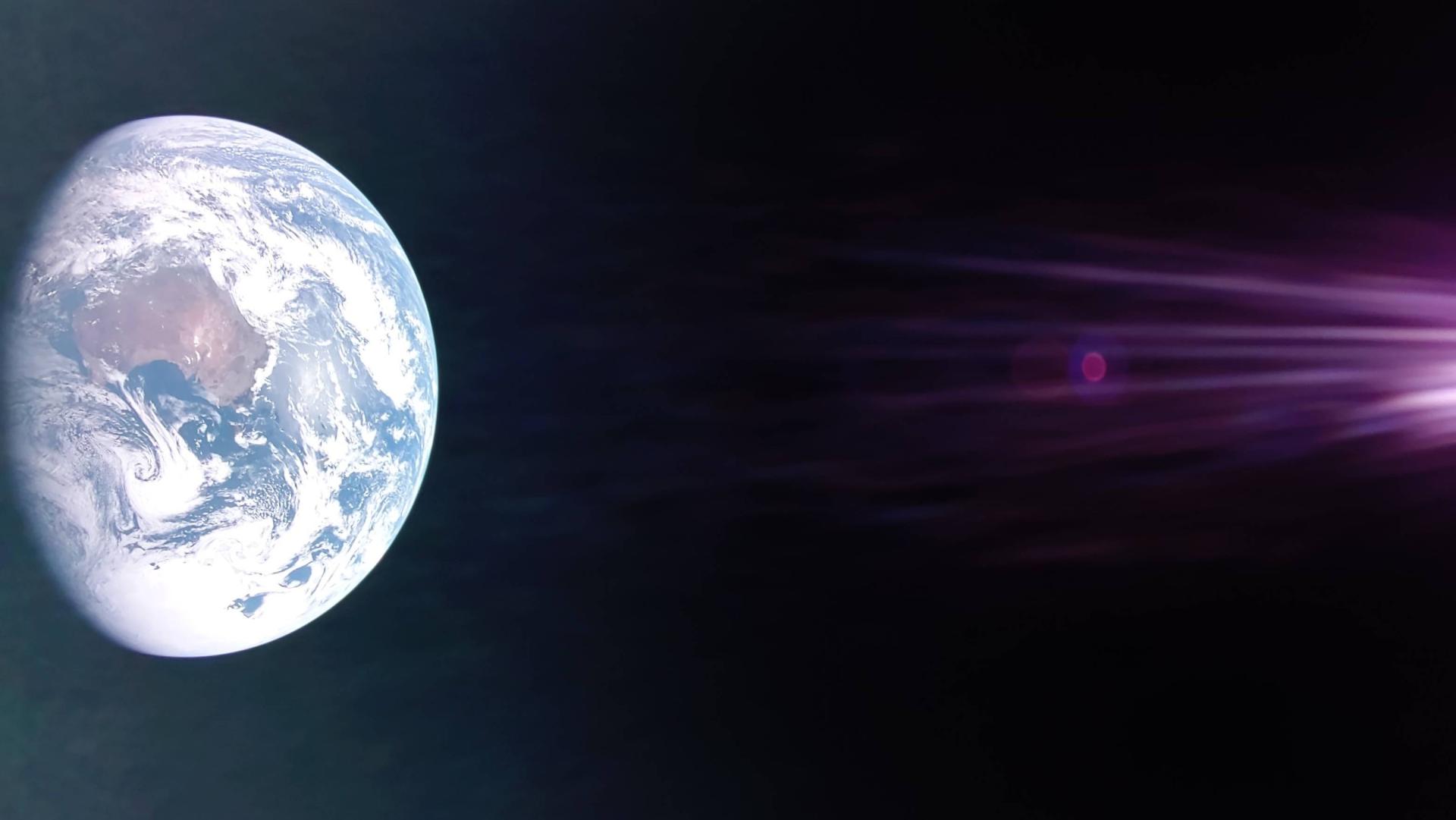
'It's not every day that you get to attempt to land on the Moon'
Firefly’s Blue Ghost Mission 1 was launched on 15 January this year and months later performed the first fully successful commercial Moon landing on 2 March. It completed more than 14 days of surface operations (346 hours of daylight) and just over five hours of operations into the lunar night. This feat marked the longest commercial operations on the Moon to date.
As Flight Director, Jaxon's played a key role from the launch to the mission's historic landing. This included monitoring telemetry data for various technical aspects of the space mission and working on potential contingency plans.
In this interview, Jaxon reflects on his journey to the Moon.
What were your space aspirations like growing up in regional Western Australia?
Some of my earliest memories are of staring up at the Milky Way from our farm in Pemberton, 307 kilometres south of Perth. That clarity, that awe, sparked an early interest in space — first in astronomy and physics.
By high school, the technical challenges of getting to space, and working in an environment full of firsts, drew me towards aerospace engineering.
Were there any challenges breaking into the space industry?
Absolutely. For Australians, it can feel distant, both physically and structurally. The pathways aren’t always clear. But I’ve seen how the Australian Space Agency is working to change that, building opportunities and inspiring the next generation. Those efforts are making a real difference.
A piece of advice that was given to you as a young space enthusiast.
My high school physics teacher once told me, “If you don’t try, you’re in the same spot you’re in now.” That stuck with me. Coming from a small town, nothing was going to fall into my lap, I had to chase it.
I tell students the same: Try. That first step matters most.
Why does space matter to you?
Space brings people together. In a world often divided, it stands out as a field that demands international cooperation and elevates humanity’s shared goals.
The collaboration between astronauts from multiple nations, and the innovation required to operate in space, is a reminder of what we can achieve when we work together.
As Flight Director, talk us through the days leading up to the Blue Ghost landing.
In the final days, the pressure builds. As Flight Director, you're at the center of a complex web, ensuring everything runs exactly to plan. It was nerve-wracking but exhilarating.
Dozens of people had poured years into this mission, and our job was to land safely so NASA’s payloads could do their science, and every engineer’s work could fulfill its purpose.
Given your experience in the US, what do you identify as the key opportunities for the Australian space sector?
Australia excels in STEM fields like mining, healthcare, and data science, all of which are valuable in the space industry. The industry isn’t just rockets and spacecraft, it needs diverse skill sets. And we’re uniquely positioned. For example, during Firefly's Moon recent landing, one of our key ground stations was in Dongara, Western Australia.
Australia has been supporting space missions since the Apollo missions, and our future is only looking brighter.
In what ways do you feel IAC 2025 might shape the Australian space sector?
It will be a game-changer. Hosting IAC 2025 will put Australia’s space sector on the global stage and help the broader public connect with the role space plays in their lives. Firefly will be there, and I expect our representatives will all leave inspired, and hopefully with a few new collaborations in the works.
How excited are you about the Australian space sector's pursuit of the Moon?
The Moon is more than a destination — it’s a stepping stone. It offers scientific insight, untapped resources, and a testbed for missions to Mars and beyond. Australia’s role in this is growing.
Right now, we’re integrating Fleet Space's SPIDER payload for Blue Ghost 2 in our clean room. It is a proud moment to see Australian technology heading to the lunar surface.
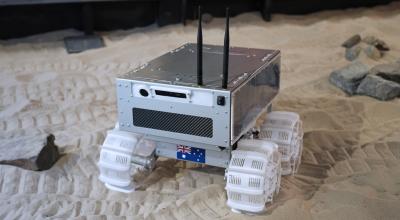
Meet Roo-ver
The Australian-made rover that will go to the Moon with NASA.
All images used in this story were supplied by Firefly Aerospace.
